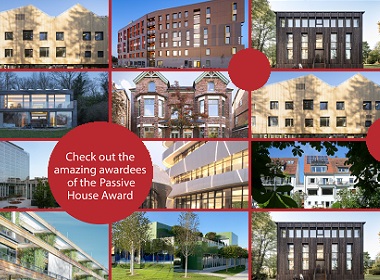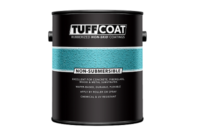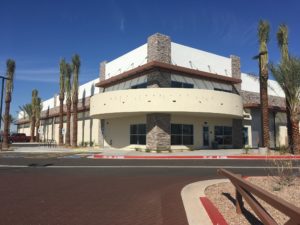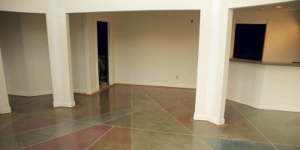 The Passive House Institute in Darmstadt has announced the Passive House Award 2020 to reward pioneering projects in the field of energy-efficient construction. A special focus of the competition will be on integrated renewable energy supply. An international jury panel will select the award winners. The award ceremony will take place during the 24th International Passive House Conference in Berlin.
The Passive House Institute in Darmstadt has announced the Passive House Award 2020 to reward pioneering projects in the field of energy-efficient construction. A special focus of the competition will be on integrated renewable energy supply. An international jury panel will select the award winners. The award ceremony will take place during the 24th International Passive House Conference in Berlin.
If mitigation of climate change is to happen, it is necessary for the buildings we live and work in to consume considerably less energy. That is exactly what the Passive House Institute will reward with the Passive House Award 2020. The architecture competition will highlight that Passive House buildings are both sustainable and aesthetically pleasing. “With the Passive House Award we wish to draw attention to the fact that Passive House buildings actively contribute to climate protection and that these projects are designed sophisticatedly. That’s what we want to honor architects for,” explains Dr Wolfgang Feist, the founder of the Passive House Institute.
Certification is a prerequisite
Passive House buildings, Low-Energy buildings, and buildings that have been retrofitted to the EnerPHit standard can be submitted to the Passive House Award 2020, regardless of the building use. What matters, is that the buildings are Passive House certified. Large developments and districts are also eligible for submission to the award, even if they have not yet been completed. Decisive is an integrated concept for the supply of energy with a focus on the energy efficiency of the buildings. A prerequisite for large developments and districts is that at least one of the buildings is already certified. In general, buildings which have already received an award in earlier architecture competitions of the Passive House Institute, are excluded from participation in this award. Entries for the Passive House Award 2020 can be submitted until 1 June 2020.
International jury panel
Among other things, the jury will consider the design, cost efficiency and energy supply of the buildings. The panel will consist of international experts, including architects Deborah Moelis from the USA and Ana Sánchez-Ostiz from Spain. Moelis supervised the Cornell Tech Passive House high-rise in New York, Sánchez-Ostiz is the director of the Environmental Design and Building Management master program at the University of Navarra. Jury panel member Burkhard Schulze Darup from Berlin advises the German Federal Environmental Agency and advocated the use of Passive House components in the reconstruction of the Frankfurt Altstadt. Professor Song Yehau, from China, is the director of the Institute for Architecture at the Tsinghua University in Beijing. As an architect, he has received numerous awards for his projects. Architect Tom Wright from the UK designed one of the most famous buildings in Dubai, the Burj Al Arab (Tower of the Arabs).
Award ceremony
The award ceremony for the Passive House Award 2020 will take place during the 24th International Passive House Conference. The conference is happening Sept. 20-21, 2020, at the Estrel Hotel and Congress Center in Berlin. You can submit abstracts for the conference until March 2, 2020. You can find further information about taking part in the Passive House Award 2020 here: www.passivehouse-award.org
Passive House buildings
In Passive House buildings, general heat loss by walls, windows and the roof is drastically reduced. This takes place by means of high-quality thermal insulation, windows with triple glazing and an airtight building envelope. During winter, the design introduces preheated air into the building by a heat recovery ventilation system. In summer, the excellent level of insulation ensures that the heat stays outside.
Altogether, five basic Passive House principles allow these highly efficient buildings to dispense with classic building heating. These buildings go by “passive houses” because a major part of their heating demand comes through “passive” sources such as solar radiation or the heat emitted by occupants and technical appliances. A Passive House thus consumes about 90 percent less heating energy than existing buildings and 75 percent less energy than an average new construction.
Passive House & NZEB
The Passive House Standard already meets the EU requirements for Nearly Zero Energy Buildings. According to the European Buildings Directive EPBD, all member states must specify requirements for so-called nZEBs in their national building regulations. These came into effect in January 2019 for public buildings and will apply for all other buildings in 2021.
Pioneer project
Four private homeowners built the first Passive House in the world 28 years ago in DarmstadtKranichstein (Germany). Dr Wolfgang Feist was one of them. Ever since the homeowners moved in with their families in 1991, professionals regard these terraced houses as a pioneer project for the Passive House Standard. After extensive technical testing, building physicists attest to the still unimpaired functioning of the first Passive House and its unchanged low heating energy consumption. With its newly installed photovoltaic system, the first Passive House now utilizes renewable energy and received the Passive House Plus certificate for this reason.
Passive House and renewable energy
One can combine the Passive House Standard well with on-site renewable energy generation. Since April 2015, the new building classes “Passive House Plus” and “Passive House Premium” have been available for this supply concept. The first buildings in these two categories have already been certified, including private houses as well as office buildings.
Passive Houses worldwide
Passive Houses buildings for all types of uses now exist everywhere. In addition to residential and office buildings there are also kindergartens and schools, sports halls, swimming pools and factories built as Passive House buildings. Builders are currently building the first Passive House hospital in the world is in Frankfurt am Main. Interest in Passive House is growing. In view of the consumption of resources in industrialized countries and the need to contain global warming, municipalities, businesses and private people are increasingly implementing new constructions or retrofits to the Passive House Standard.
About the Passive House Institute
The Passive House Institute hast its headquarters in Darmstadt (Germany). It is an independent research institute for highly efficient use of energy in buildings. The Institute founded by Dr. Wolfgang Feist holds a leading position internationally with regard to research and development in the field of energy-efficient construction. Among other things, the group awarded Dr. Wolfgang Feist with the DBU Environmental Prize in 2001 for developing the Passive House concept.
Passive House Conference
The 24th International Passive House Conference will take place Sept. 20-21,2020, in Berlin. www.passivehouse-conference.org















